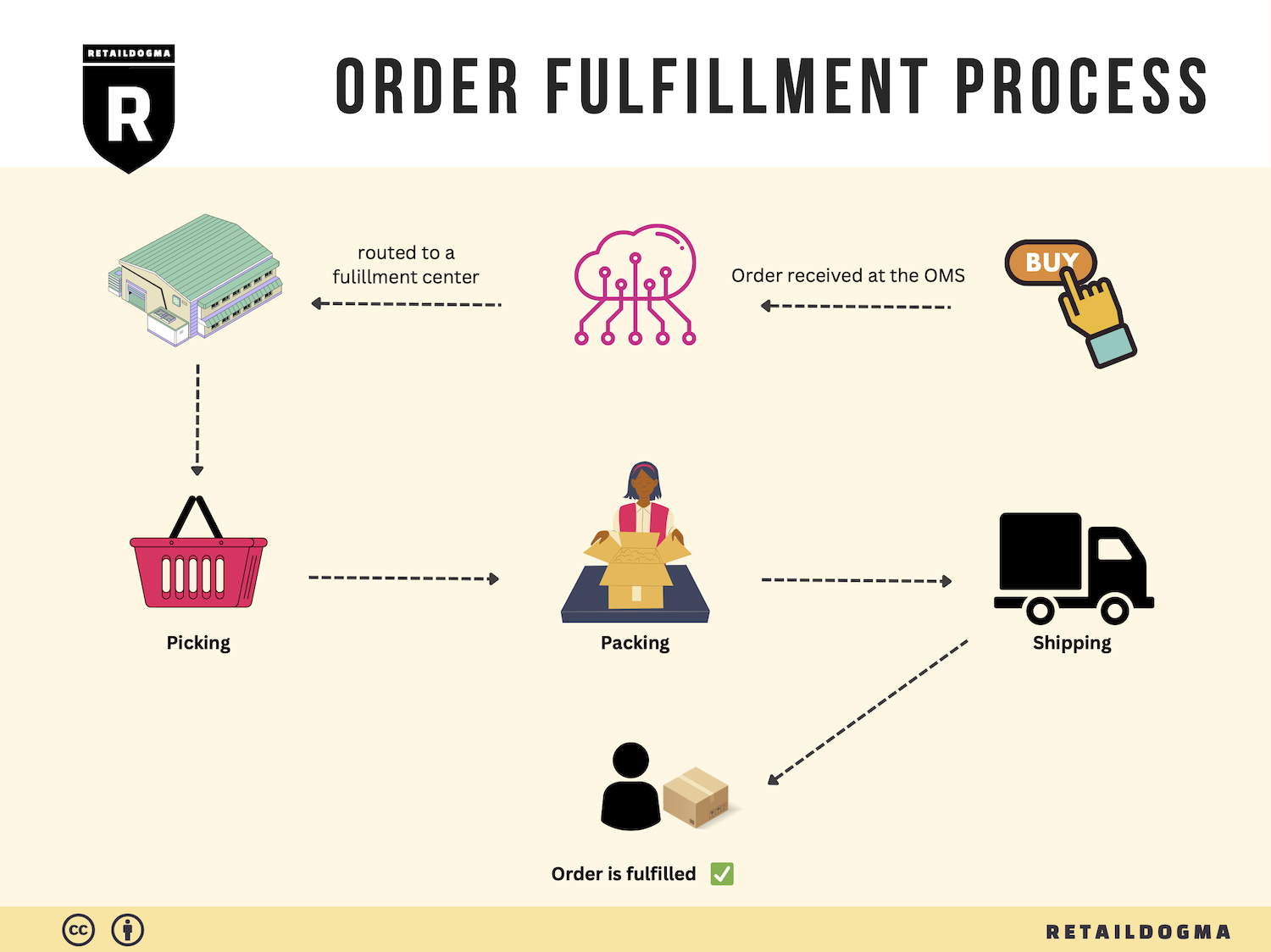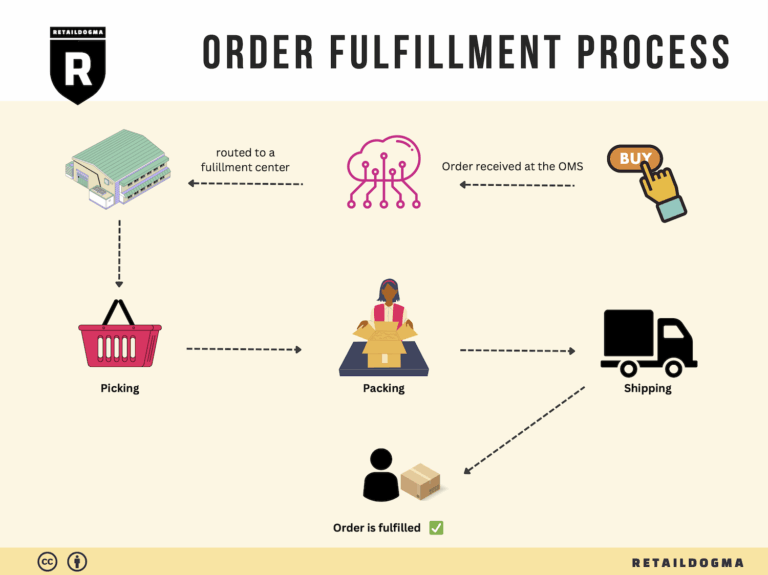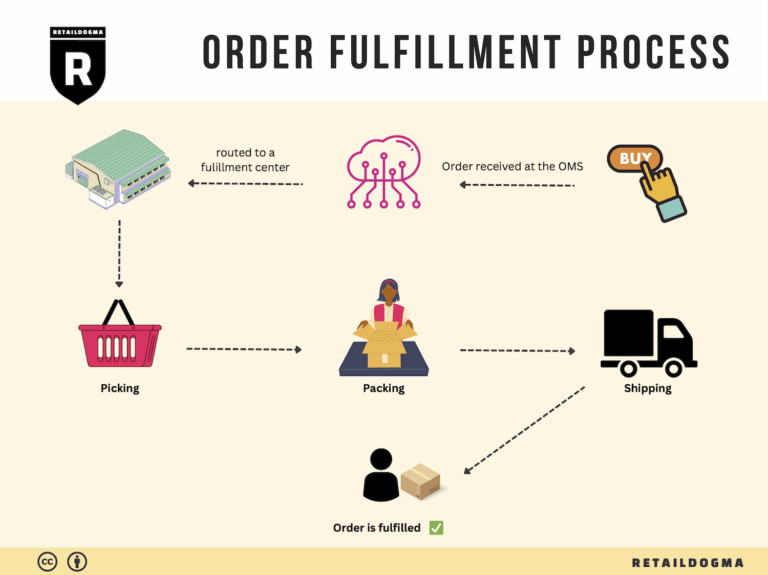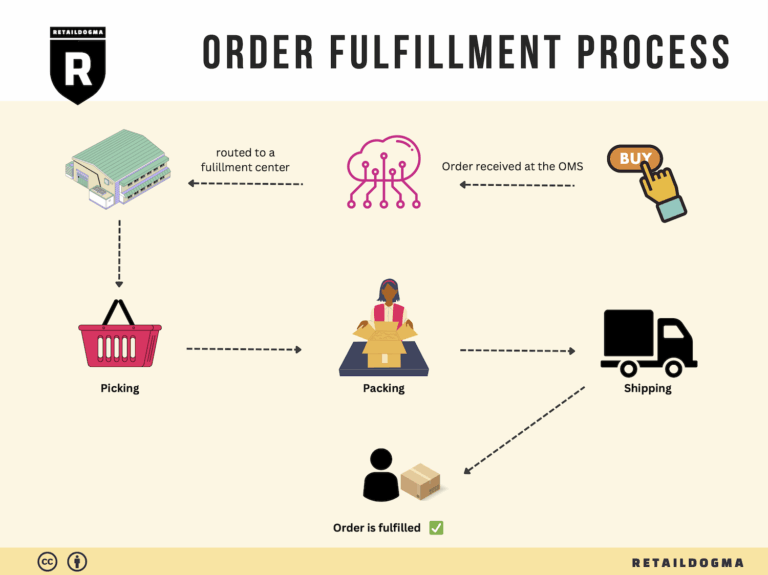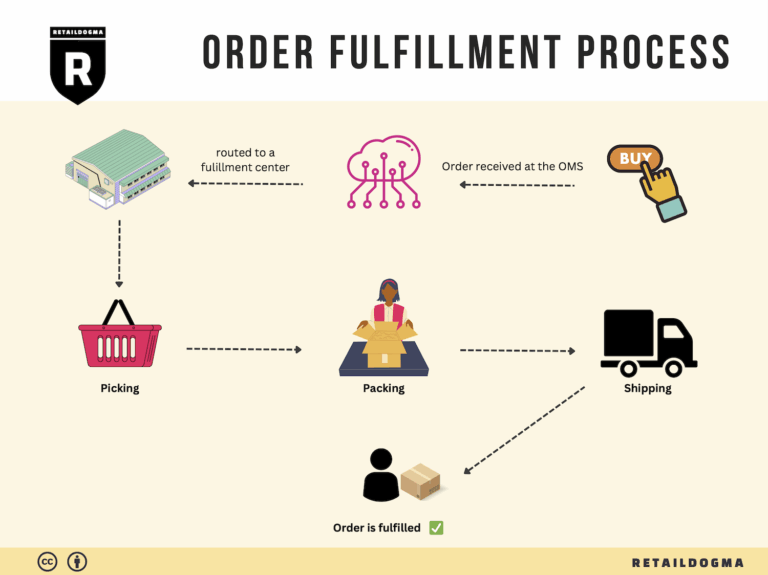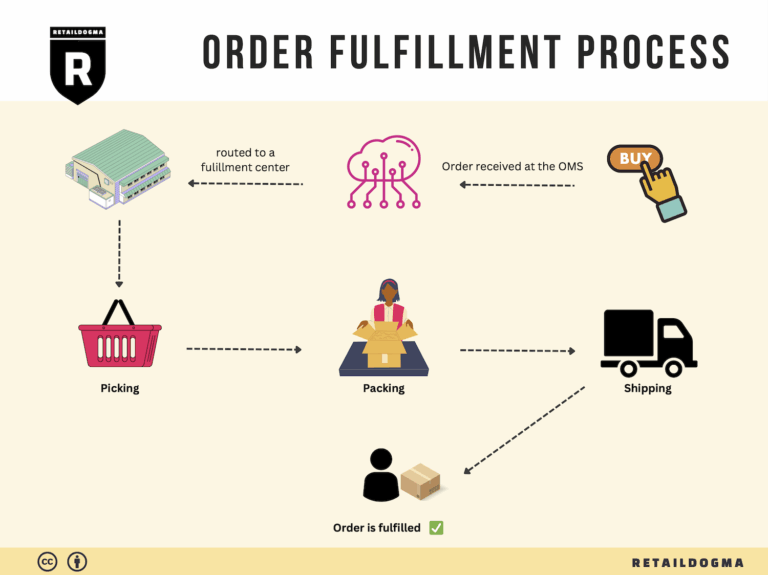Ecommerce Fulfillment Services: The Ultimate Guide (2025)
What is E-commerce Fulfillment? An Introduction for Growing Businesses
Understanding E-commerce Fulfillment: A Key to Scaling Your Business
As an e-commerce business owner, you may find yourself grappling with the daunting task of packing and shipping orders. It can feel overwhelming, especially as your sales grow and customer expectations rise. Managing inventory, ensuring timely deliveries, and maintaining product quality are critical for success but can also consume precious resources and time. This is where e-commerce fulfillment comes into play.
At its core, fulfillment is the process of getting a product from your warehouse to your customer’s doorstep. It encompasses everything from inventory management and order processing to packing and shipping. A well-structured fulfillment strategy not only streamlines operations but also enhances customer satisfaction—a vital component in today’s competitive online marketplace.
In this guide, we will explore various fulfillment models that can support your business as it scales. You’ll learn about Third-Party Logistics (3PL) providers, Fulfilled by Amazon (FBA), and other options that can alleviate the burden of logistics. Each model has its unique advantages and challenges, and understanding them will help you choose the right fit for your business needs.
We will also delve into the core services typically offered by fulfillment partners, including inventory storage, order picking and packing, shipping, and returns management. Knowing what services to expect can empower you to negotiate better terms and select the right provider for your specific requirements.
Choosing the right fulfillment partner is crucial for your success. We’ll discuss key considerations, such as scalability, technology integration, and customer service, to help you make an informed decision. Additionally, we will touch on pricing models, ensuring you understand the costs associated with different fulfillment options and how to optimize your budget.
Ultimately, this guide aims to empower e-commerce businesses like yours to make smart, strategic decisions about logistics. By understanding the intricacies of e-commerce fulfillment, you can enhance operational efficiency, improve customer experiences, and focus on what you do best: growing your business. With the right knowledge and tools, you can transform fulfillment from a daunting challenge into a streamlined operation that drives your success.
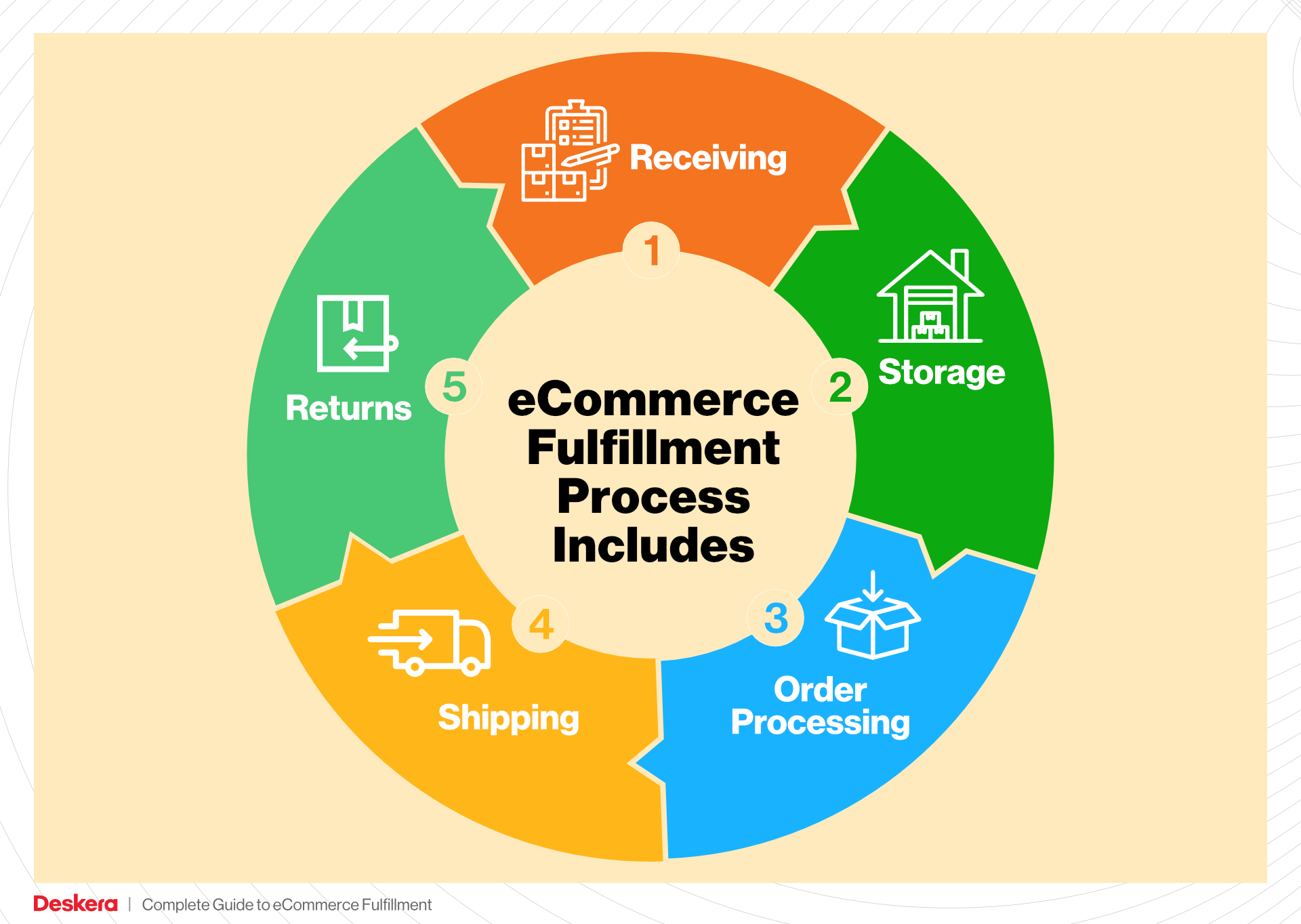
What You’ll Learn In This Guide
- What is E-commerce Fulfillment? An Introduction for Growing Businesses
- The Order Fulfillment Process: From ‘Buy’ Button to Customer’s Door
- Comparing Fulfillment Models: In-House vs. 3PL vs. Dropshipping
- A Deep Dive into Amazon FBA: Pros, Cons, and Who It’s For
- Core Services Offered by Fulfillment Centers
- How to Choose a Fulfillment Partner: A 6-Point Checklist
- Understanding Fulfillment Pricing: A Breakdown of Common Fees
- Frequently Asked Questions (FAQs) about Fulfillment
- Conclusion: Is Outsourcing Fulfillment the Right Move for Your Business?
- Important Disclaimer
The Order Fulfillment Process: From ‘Buy’ Button to Customer’s Door
1. Receiving Inventory
The order fulfillment process begins with receiving inventory from suppliers or manufacturers. This step is critical as it sets the foundation for all subsequent operations. Upon arrival, each shipment should be inspected for accuracy against purchase orders to ensure that the correct quantities and products have been delivered. This is where the concept of Stock Keeping Units (SKUs) becomes vital. Each product should have a unique SKU that facilitates easy tracking and management.
The importance of this step cannot be overstated. Accurate receiving minimizes discrepancies that can lead to stockouts or overstock situations, which can negatively affect customer satisfaction. Moreover, a well-organized receiving process helps to streamline the flow of goods into the warehouse, reducing the time products spend in transit and increasing the speed at which they become available for order fulfillment.
2. Warehouse Storage
Once inventory is received and verified, the next step is warehouse storage. Products must be organized efficiently in the warehouse to facilitate easy access and quick retrieval. This involves categorizing items based on their SKU, size, and demand frequency. Implementing an organized shelving system and using warehouse management software (WMS) can significantly enhance this process.
Effective warehouse storage is crucial for maintaining an efficient order fulfillment system. Properly stored inventory not only helps reduce the time it takes to locate items during order picking but also minimizes the risk of product damage. Additionally, good storage practices can lead to optimized space usage, which is essential for scaling operations as your business grows.
3. Order Picking
Order picking is the process of retrieving items from their storage locations to fulfill customer orders. This step often utilizes pick lists, which are documents that outline the specific items and quantities needed for each order. Depending on the size of your operation, you might implement different picking methods, such as single order picking, batch picking, or zone picking.
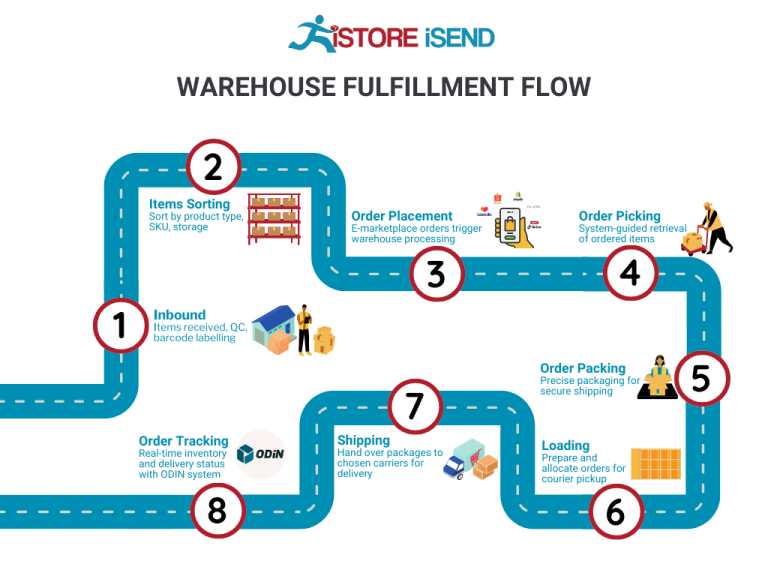
The efficiency of the order picking process directly impacts the overall fulfillment speed. With the rise of consumer expectations for fast shipping, optimizing this step is more important than ever. Accurate and efficient picking reduces the likelihood of errors, leading to fewer returns and higher customer satisfaction. Implementing technology, such as barcode scanners or pick-to-light systems, can further streamline this process and ensure that the right products are picked every time.
4. Order Packing
After items have been picked, they move to the order packing stage. This step involves carefully packaging the products to ensure they arrive at the customer’s door in perfect condition. Factors to consider include the choice of packaging materials, the use of void fill to prevent movement during transit, and the overall presentation of the package. This is where the concept of sustainable packaging comes into play, as consumers increasingly favor brands that prioritize eco-friendly materials.
The packing process is not only about protecting the products but also about creating a memorable unboxing experience. Quality packaging can enhance brand perception and encourage customers to share their experiences on social media, effectively acting as free marketing. Additionally, right-sizing packages to minimize dimensional weight can lead to reduced shipping costs, benefiting both your bottom line and your customers.
5. Shipping & Delivery
The final step in the order fulfillment process is shipping and delivery. Once orders are packed, they are prepared for shipment to the customer. This involves selecting the appropriate shipping carriers and methods based on factors such as cost, speed, and reliability. Many businesses use shipping software to compare rates and automate label printing, which can significantly reduce processing time.
Shipping is crucial as it represents the last touchpoint between your brand and the customer. Timely and reliable delivery can enhance customer satisfaction and loyalty. Additionally, providing tracking information allows customers to monitor their orders, which can alleviate anxiety and improve the overall experience. In today’s fast-paced e-commerce environment, ensuring that your shipping processes are efficient and customer-friendly is essential for maintaining a competitive edge.
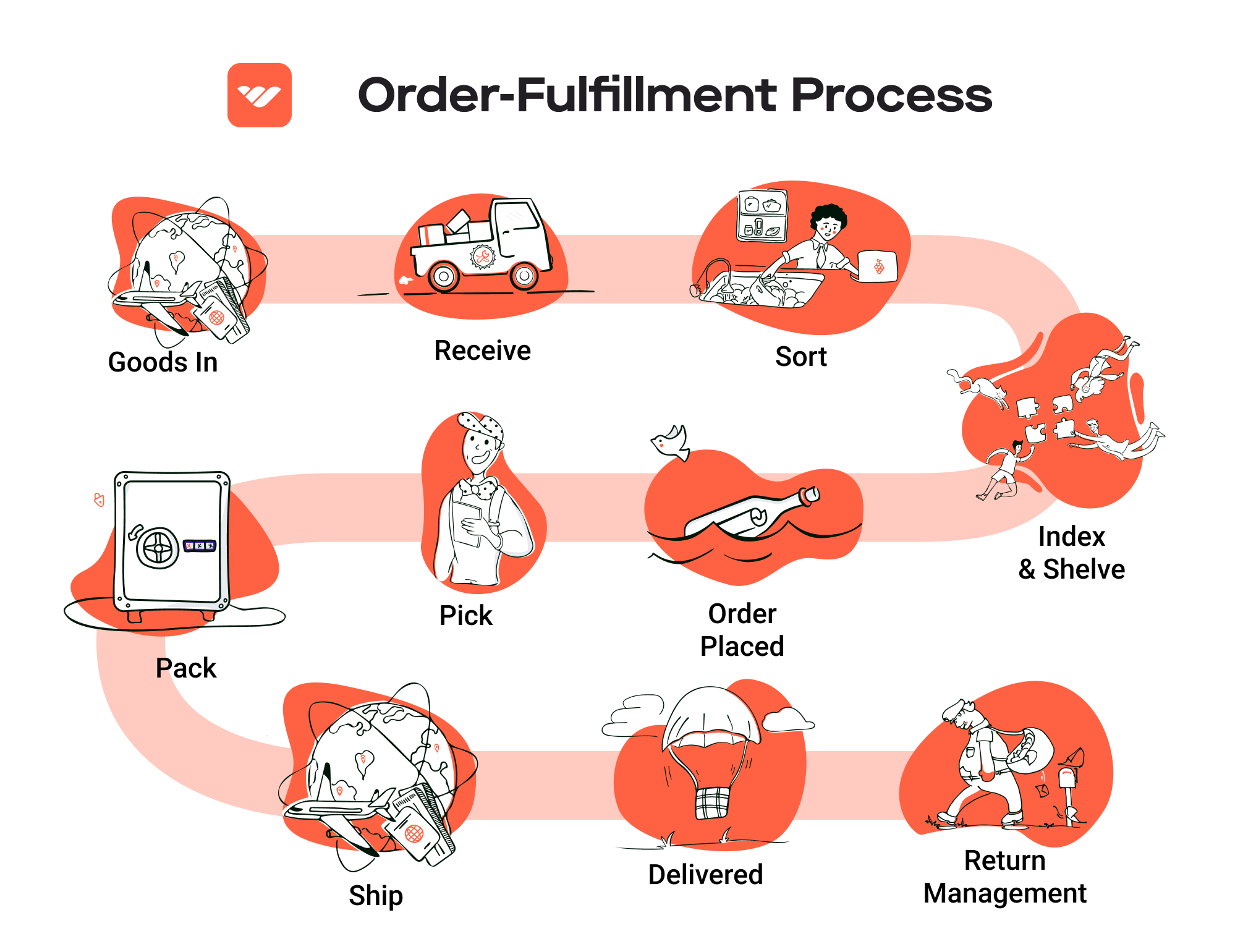
By understanding and optimizing each of these five steps—receiving inventory, warehouse storage, order picking, order packing, and shipping & delivery—e-commerce businesses can create a seamless order fulfillment process that enhances customer satisfaction and supports growth.
Comparing Fulfillment Models: In-House vs. 3PL vs. Dropshipping
Fulfillment Model Comparison
| Model | Who Handles Inventory | Best For (Business Stage) | Key Advantage | Key Disadvantage |
|---|---|---|---|---|
| In-House Fulfillment | The e-commerce business | Startups to established brands | Full control over inventory and fulfillment process | High overhead costs and resource commitment |
| Third-Party Logistics (3PL) | Third-party provider | Growing businesses scaling operations | Scalability and expertise in logistics | Less control over inventory and potential for misalignment |
| Dropshipping | Supplier or manufacturer | Startups and small businesses | Low upfront investment and minimal risk | Lower profit margins and reliance on suppliers |
In-House Fulfillment
In-house fulfillment involves managing the entire order fulfillment process within your own business. This model is often adopted by startups and established brands that wish to maintain full control over inventory management, order processing, and shipping. The primary advantage of in-house fulfillment is the ability to oversee every aspect of the operation, ensuring that the packaging meets your brand’s standards and the customer experience is consistent. This control allows for quick adjustments based on customer feedback or operational needs, which is particularly important in the competitive e-commerce landscape.
However, managing fulfillment in-house also comes with significant challenges. High overhead costs associated with warehousing, staffing, and technology investments can strain financial resources, especially for smaller businesses. Additionally, the operational complexity increases as order volumes grow, requiring businesses to invest in logistics management solutions to maintain efficiency. Therefore, while in-house fulfillment provides control and flexibility, it demands a higher level of commitment and resource allocation.
Third-Party Logistics (3PL)
Third-party logistics (3PL) providers offer a comprehensive solution for businesses looking to outsource their fulfillment operations. This model is particularly advantageous for growing companies that need to scale their logistics without the burden of managing warehousing and shipping in-house. 3PLs typically have extensive networks and expertise in logistics, allowing them to optimize shipping costs, streamline inventory management, and enhance the overall customer experience.
The key advantage of using a 3PL is scalability. As your business grows, a 3PL can easily accommodate increases in order volume without requiring significant upfront investment in infrastructure or staff. They also often provide advanced technology solutions for tracking inventory and managing orders, which can improve operational efficiency. However, the trade-off is a loss of direct control over the fulfillment process. Businesses may face challenges in aligning their branding and customer experience with the 3PL’s operations, which can lead to inconsistencies that affect customer satisfaction. Additionally, potential communication issues can arise if the 3PL does not fully understand the brand’s unique requirements.
Dropshipping
Dropshipping is a fulfillment model where the e-commerce business does not hold inventory. Instead, when a customer places an order, the business purchases the item from a third-party supplier, who then ships it directly to the customer. This model is particularly attractive to startups and small businesses that want to minimize upfront investments and operational risks. The primary advantage of dropshipping is the low barrier to entry; businesses can launch without the need for warehousing or inventory management, allowing them to focus on marketing and sales.
However, dropshipping also presents significant challenges. One of the main drawbacks is the lower profit margins, as suppliers typically charge higher prices for individual items compared to bulk purchasing. Additionally, businesses relying on dropshipping must contend with the risk of stockouts and shipping delays, which can damage customer trust and brand reputation. The reliance on suppliers for inventory management means that businesses have less control over product quality and fulfillment speed, making it essential to choose reliable partners. In summary, while dropshipping offers a low-risk entry point into e-commerce, it requires careful management of supplier relationships and customer expectations to ensure success.
Conclusion
Choosing the right fulfillment model is crucial for scaling your e-commerce business. Each model—In-House, 3PL, and Dropshipping—has its unique advantages and disadvantages that must be weighed against your business goals, operational capacity, and market dynamics. By understanding these models, you can make informed decisions that align with your growth strategy and customer experience objectives.
A Deep Dive into Amazon FBA: Pros, Cons, and Who It’s For
Understanding Fulfillment by Amazon (FBA)
Fulfillment by Amazon (FBA) is a service that allows e-commerce sellers to store their products in Amazon’s fulfillment centers. Amazon then takes care of storage, packaging, shipping, and customer service for these products. This service enables sellers to leverage Amazon’s robust logistics infrastructure and customer base, helping them scale their businesses more efficiently.
When a customer orders a product, Amazon picks, packs, and ships it on behalf of the seller. This seamless integration makes it easier for sellers to manage their inventory and focus on growing their business rather than handling logistical challenges.
How FBA Works
-
Set Up Your FBA Account: Sellers must create an Amazon seller account and enroll in the FBA program. This involves selecting the products they wish to fulfill through Amazon.
-
Prepare Your Products: Sellers are responsible for packaging and labeling their products according to Amazon’s guidelines before shipping them to Amazon’s fulfillment centers.
-
Ship Inventory to Amazon: Once the products are prepared, sellers send them to designated Amazon fulfillment centers. Amazon provides shipping labels and guidelines to streamline this process.
-
Product Storage: Products are stored in Amazon’s warehouses, where they are managed by Amazon’s fulfillment team. Sellers can monitor their inventory levels through their Amazon seller dashboard.
-
Customer Orders: When a customer places an order for a product fulfilled by Amazon, Amazon takes care of the entire process, from picking the product off the shelf to packing and shipping it to the customer.
-
Customer Service and Returns: Amazon handles customer inquiries, complaints, and returns for FBA products, providing sellers with additional support.
Pros of Using FBA
1. Prime Eligibility
One of the most significant advantages of FBA is that it makes products eligible for Amazon Prime. This status can lead to increased visibility and sales, as Prime members often prefer to buy products that offer free two-day shipping.
2. Trust and Credibility
Amazon is a trusted brand, and utilizing FBA can enhance a seller’s credibility. Customers are more likely to purchase from sellers who offer Amazon’s reliable shipping and customer service, leading to higher conversion rates.
3. Multi-Channel Fulfillment
FBA enables sellers to use Amazon’s fulfillment services for orders placed on other platforms, such as eBay or their own e-commerce website. This flexibility allows sellers to streamline their operations and maintain a consistent fulfillment process across multiple channels.
4. Scalable Operations
FBA allows sellers to scale their operations without the need for significant investments in warehousing and logistics. Sellers can focus on marketing and product development while Amazon manages the logistics.
5. Time Savings
By outsourcing fulfillment to Amazon, sellers can save time on order processing, packing, and shipping. This time can be redirected toward strategic business activities, such as customer engagement and product improvement.
Cons of Using FBA
1. High Fees
While FBA provides many benefits, it comes with costs that can add up quickly. Sellers must pay storage fees for their inventory and fulfillment fees for each item sold. These costs can significantly reduce profit margins, especially for low-priced products.
2. Strict Inventory Management Rules
Amazon has strict policies regarding inventory management, including limits on the quantity of products that can be stored in their warehouses. Sellers must maintain a careful inventory balance to avoid additional fees for long-term storage or stockouts.
3. Commingling Risks
FBA allows for commingling of inventory, meaning that products from different sellers can be stored in the same location. This can lead to issues if a customer receives a product that is defective or not as described, which may negatively impact the seller’s reputation.
4. Less Control Over Shipping
While Amazon handles shipping, sellers have limited control over the shipping process and delivery times. This can be problematic if there are shipping delays or issues that impact customer satisfaction.
5. Dependency on Amazon’s Policies
Sellers are subject to Amazon’s policies and changes that may affect their business, including changes to fees, fulfillment processes, or even account suspension risks if policies are violated.
Who is FBA Best For?
Fulfillment by Amazon is particularly beneficial for sellers who:
- Have a high volume of sales: Businesses that sell products in large quantities can benefit from the economies of scale provided by FBA.
- Sell in competitive niches: Sellers in highly competitive markets can leverage Amazon’s infrastructure and Prime eligibility to stand out.
- Prioritize customer service: Sellers who want to provide excellent customer service without the overhead of managing returns and inquiries may find FBA advantageous.
- Focus on growth: Entrepreneurs looking to scale their operations quickly without investing heavily in logistics and warehousing will find FBA to be a practical solution.
Conversely, FBA may not be the best fit for businesses with low margins or those that prefer to maintain full control over their logistics and customer interactions. Understanding the nuances of FBA is essential for making an informed decision about whether to incorporate it into your e-commerce strategy.
Core Services Offered by Fulfillment Centers
Inventory Management & Warehousing
Inventory management and warehousing are fundamental services provided by fulfillment centers. This involves the systematic tracking, storing, and organizing of inventory to ensure that products are readily available for orders. Fulfillment centers utilize advanced inventory management systems that integrate with e-commerce platforms to provide real-time visibility into stock levels, sales trends, and reorder points.
Benefits to E-commerce Businesses:
-
Improved Accuracy: With sophisticated tracking systems, businesses can minimize errors related to stock levels, reducing the risk of stockouts or overstock situations. This accuracy is crucial for maintaining customer satisfaction and trust.
-
Cost Efficiency: By leveraging a fulfillment center’s warehousing capabilities, businesses can avoid the overhead costs associated with maintaining their own storage facilities. This includes savings on rent, utilities, and staffing.
-
Scalability: As e-commerce businesses grow, their inventory needs can fluctuate significantly. Fulfillment centers provide the flexibility to scale storage space and inventory management efforts up or down based on demand, allowing businesses to respond quickly to market changes.
-
Data Insights: Many fulfillment centers offer analytics tools that help e-commerce businesses understand their inventory turnover rates and customer preferences. This data is invaluable for making informed decisions about product offerings and stock levels.
Pick and Pack Services
Pick and pack services refer to the process of selecting (picking) items from warehouse shelves and packing them for shipment. Fulfillment centers employ efficient picking methods—such as batch picking or wave picking—to streamline this process, ensuring that orders are filled quickly and accurately.
Benefits to E-commerce Businesses:
-
Speed: Quick order fulfillment is essential in the competitive e-commerce landscape. Fulfillment centers have trained staff and optimized processes that significantly reduce the time it takes to pick and pack orders, enabling faster delivery to customers.
-
Accuracy: With dedicated teams focused solely on fulfillment, the likelihood of shipping errors is greatly diminished. This accuracy enhances customer satisfaction and minimizes the costs associated with returns and replacements.
-
Customization: Many fulfillment centers offer customizable packing options, allowing businesses to enhance their brand presence through personalized packaging. This can improve the unboxing experience, which is increasingly important for customer engagement in social media.
-
Labor Efficiency: By outsourcing picking and packing operations, businesses can free up their internal resources to focus on core activities such as marketing and product development, rather than logistics.
Kitting and Assembly
Kitting and assembly services involve grouping various products together to create a single package or completing a product assembly before shipment. This is particularly useful for businesses that offer bundles or kits, such as subscription boxes or promotional items.
Benefits to E-commerce Businesses:
-
Enhanced Product Offerings: Kitting allows businesses to create unique product bundles that can drive higher sales and improve customer satisfaction. Customers appreciate the convenience of receiving related items together.
-
Streamlined Operations: By having a fulfillment center handle kitting and assembly, businesses can simplify their supply chain and reduce the complexity of managing multiple SKUs. This operational efficiency can lead to cost savings.
-
Quality Control: Fulfillment centers typically have quality control measures in place to ensure that all items included in a kit meet the required standards. This minimizes the risk of customer dissatisfaction due to missing or defective items.
-
Faster Turnaround: With specialized teams dedicated to kitting and assembly, fulfillment centers can quickly prepare bundled products for shipping, enabling businesses to meet customer expectations for rapid delivery.
Returns Management (Reverse Logistics)
Returns management, or reverse logistics, refers to the process of handling product returns from customers efficiently. Fulfillment centers provide streamlined systems for receiving, inspecting, and restocking returned items, helping businesses manage their return processes effectively.
Benefits to E-commerce Businesses:
-
Customer Satisfaction: A well-managed returns process can significantly enhance customer loyalty. Fulfillment centers can provide quick and easy return options, ensuring customers feel valued and are more likely to make future purchases.
-
Cost Control: Efficient returns management minimizes the costs associated with handling returns, such as restocking fees and shipping expenses. Fulfillment centers can implement strategies to reduce return rates through better product descriptions and quality control.
-
Inventory Accuracy: By effectively managing returns, fulfillment centers help maintain accurate inventory levels. Returned items can be quickly assessed and restocked, ensuring that businesses have the right products available for resale.
-
Data Insights: Analyzing return data can provide valuable insights into customer behavior and product performance. Fulfillment centers can help businesses identify trends and make necessary adjustments to their product offerings or marketing strategies.
In summary, partnering with a fulfillment center for these core services allows e-commerce businesses to streamline their operations, enhance customer satisfaction, and ultimately scale their logistics efficiently. By focusing on the specifics of inventory management, pick and pack services, kitting, and returns management, businesses can position themselves for sustainable growth in the competitive online marketplace.
How to Choose a Fulfillment Partner: A 6-Point Checklist
Location & Warehouse Network
Importance:
The geographic location of your fulfillment partner’s warehouses is crucial for minimizing shipping times and costs. A strategically located network can enhance your delivery speed, which is essential for customer satisfaction and retention.
Questions to Ask:
– Where are your warehouses located, and how do they align with our target markets?
– Do you have a network of warehouses that can facilitate both national and international shipping?
– What is your average shipping time to key regions, and how do you handle shipping during peak periods?
Technology & Integrations
Importance:
In today’s digital landscape, seamless integration with your existing systems (like your e-commerce platform, inventory management, and CRM) is vital for efficient operations. Advanced technology can also provide real-time tracking and analytics, enhancing the customer experience.
Questions to Ask:
– What technology platforms do you use, and how do they integrate with e-commerce systems like Shopify, WooCommerce, or Amazon?
– Can you provide real-time inventory tracking and order management capabilities?
– What kind of reporting and analytics do you offer to help us optimize our fulfillment processes?
Specializations (e.g., Cold Storage, Oversized Items)
Importance:
Not all fulfillment partners can handle every type of product. If your business deals with specialized items, such as perishables that require cold storage or oversized products that need specific handling, it’s essential to find a partner that can meet those needs.
Questions to Ask:
– What specializations do you have in your fulfillment services (e.g., cold storage, fragile items, oversized products)?
– Can you accommodate unique packaging and shipping requirements for our products?
– What measures do you have in place to ensure product integrity during storage and shipping?
Scalability & Capacity
Importance:
As your business grows, your fulfillment needs will evolve. A partner that can scale with you—whether during peak seasons or as you expand your product line—is essential to maintaining efficiency and customer satisfaction.
Questions to Ask:
– How do you handle fluctuations in order volume, especially during peak seasons?
– What is your current capacity, and how quickly can you scale up operations if needed?
– Can you provide examples of how you’ve supported other clients during periods of rapid growth?
Pricing and Contracts
Importance:
Understanding the pricing structure and contract terms is critical to ensure that you’re making a financially sound decision. Hidden fees or rigid contracts can impact your bottom line and flexibility.
Questions to Ask:
– What is your pricing structure, and what factors could influence costs (e.g., shipping zones, packaging materials)?
– Are there any additional fees we should be aware of (e.g., storage fees, pick-and-pack fees)?
– What are the terms of the contract, and what is the process for termination or renegotiation?
Customer Support & Reviews
Importance:
Responsive and knowledgeable customer support can make a significant difference in your fulfillment operations. Additionally, reviews and testimonials can provide insight into the partner’s reliability and service quality.
Questions to Ask:
– What kind of customer support do you offer (e.g., dedicated account manager, 24/7 support)?
– Can you provide references or case studies from other clients in our industry?
– How do you handle issues or complaints, and what is the typical resolution time?
Conclusion
Choosing the right fulfillment partner is a pivotal decision that can significantly impact your e-commerce operations. By using this checklist, you can ensure that you are making an informed choice that aligns with your business goals and customer expectations. Remember, a good partnership is built on clear communication, mutual understanding, and a shared commitment to excellence.
Understanding Fulfillment Pricing: A Breakdown of Common Fees
Initial Setup Fees
Initial setup fees are typically charged by fulfillment centers to cover the costs associated with onboarding a new client. This may include creating an account, integrating your e-commerce platform with their system, and setting up inventory management tools. Depending on the complexity of your needs, this fee can range from a few hundred to several thousand dollars.
To calculate these fees, fulfillment centers often assess the scope of services required, including software integrations and necessary training for your staff. It’s essential to discuss your specific needs during the initial consultation to get a clear understanding of the setup costs.
Receiving Fees
Receiving fees are incurred when your inventory arrives at the fulfillment center. This fee covers the labor and resources needed to unload, inspect, and store your products. It is usually charged per pallet or per item received.
For example, if your shipment consists of 10 pallets, and the receiving fee is $50 per pallet, your total receiving fee would amount to $500. Some fulfillment centers may also charge additional fees for special handling or inspection services, especially if your products require extra care or verification before they are stored.
Storage Fees (per pallet/bin)
Storage fees are charged for the space your inventory occupies within the fulfillment center. This fee is typically calculated on a per-pallet or per-bin basis, with rates varying based on the size and type of storage solution you select. For instance, you may be charged $20 per pallet per month.
It’s crucial to understand how your inventory turnover affects storage costs. If you maintain high inventory levels for extended periods, these fees can accumulate quickly. To optimize your storage costs, consider implementing just-in-time inventory practices or using data analytics to predict demand and adjust your stock levels accordingly.
Pick & Pack Fees (per item/order)
Pick and pack fees are charged for the process of selecting items from inventory and preparing them for shipment. This fee can be structured either per item or per order, depending on the fulfillment center’s pricing model. For example, a fulfillment center might charge $1.50 per item picked and packed.
The calculation of these fees can vary based on the complexity of the order. Orders that require special packaging, multiple items, or custom inserts may incur higher fees due to the additional labor and time involved. To minimize pick and pack costs, streamline your product offerings and consider bundling items to reduce the number of individual picks.
Shipping Fees
Shipping fees are one of the most significant costs in the fulfillment process and can vary widely based on factors such as shipping method, destination, and package weight. Fulfillment centers typically charge shipping fees based on the carrier rates, which can fluctuate depending on the season and service level (e.g., standard, expedited).
To calculate shipping fees, fulfillment centers will often weigh the package and measure its dimensions to determine dimensional weight, which may result in higher costs if the package is large but lightweight. It’s advisable to negotiate shipping rates with your fulfillment provider and explore options such as flat-rate shipping or discounted carrier rates to optimize your shipping expenses.
Tips for Getting an Accurate Quote
-
Be Transparent About Your Needs: Clearly outline your business model, product types, and expected order volumes when seeking quotes from fulfillment centers. This information will help them provide a more accurate estimate.
-
Request a Detailed Breakdown: Ask for a detailed breakdown of all potential fees, including any variable costs associated with your specific products or services. This will help you avoid unexpected charges.
-
Inquire About Discounts: Many fulfillment centers offer discounts based on order volume or long-term contracts. Don’t hesitate to ask about available discounts that could lower your overall costs.
-
Compare Multiple Quotes: Obtain quotes from several fulfillment providers to compare pricing structures, services offered, and overall value. This will enable you to make an informed decision based on your unique business needs.
-
Evaluate the Total Cost of Fulfillment: Instead of focusing solely on individual fees, consider the total cost of fulfillment, including all associated services and how they align with your business goals.
By understanding these common fulfillment pricing models and employing these tips, you can better navigate the complexities of fulfillment costs and choose a provider that aligns with your business objectives.
Frequently Asked Questions (FAQs) about Fulfillment
1. What is packaging fulfillment?
Packaging fulfillment refers to the process of preparing and packaging products for shipment to customers. This involves selecting the appropriate packaging materials, ensuring product protection during transit, and efficiently managing the packing operations to meet delivery timelines.
2. What’s the difference between a warehouse and a fulfillment center?
A warehouse primarily stores goods and may not have the infrastructure for order processing and shipping. In contrast, a fulfillment center is specifically designed to manage the entire order fulfillment process, including receiving inventory, picking and packing orders, and shipping directly to customers. Fulfillment centers are often equipped with advanced technology to streamline operations.
3. What is a 3PL (Third-Party Logistics)?
A 3PL is a company that provides outsourced logistics services, which can include warehousing, fulfillment, and transportation. E-commerce businesses often partner with 3PLs to leverage their expertise, technology, and resources to improve efficiency and reduce costs in their supply chain operations.
4. How much do fulfillment services cost?
Fulfillment service costs can vary significantly based on factors such as order volume, the complexity of operations, shipping methods, and packaging requirements. Typically, costs may include storage fees, picking and packing fees, shipping costs, and any additional services like returns processing. It’s advisable to request quotes from multiple providers to find the best fit for your business.
5. How can I optimize my packaging for e-commerce?
To optimize packaging for e-commerce, consider the following strategies:
– Right-sizing: Use boxes that closely fit your products to minimize void fill and reduce shipping costs.
– Sustainability: Choose eco-friendly materials that align with customer values.
– Branding: Incorporate unique designs and branding elements to enhance the unboxing experience.
– Protection: Ensure that packaging protects products from damage during transit.
6. What are the benefits of custom packaging?
Custom packaging offers several advantages, including improved brand recognition, enhanced customer experience, and better product protection. It allows businesses to differentiate themselves in a crowded market, create memorable unboxing experiences, and potentially reduce shipping costs through optimized designs.
7. How does automation impact packaging fulfillment?
Automation can significantly enhance packaging fulfillment by increasing operational efficiency, reducing labor costs, and minimizing human error. Automated systems can quickly and accurately pick, pack, and label products, which is especially beneficial during peak seasons when order volumes spike.
8. What should I consider when choosing a fulfillment partner?
When selecting a fulfillment partner, consider the following factors:
– Experience and expertise: Look for providers with a proven track record in your industry.
– Technology: Ensure they use modern systems for inventory management, order processing, and tracking.
– Scalability: Choose a partner that can grow with your business and handle fluctuations in order volume.
– Location: Proximity to your customer base can affect shipping times and costs.
9. How can I improve the unboxing experience for customers?
To enhance the unboxing experience, you can:
– Use aesthetically pleasing packaging that reflects your brand.
– Include personalized notes or inserts that engage customers.
– Incorporate interactive elements like QR codes for additional content.
– Ensure that packaging is easy to open yet secure enough to protect the product.
10. What are the best practices for handling returns in fulfillment?
Best practices for managing returns in fulfillment include:
– Clear return policies: Communicate straightforward return guidelines to customers.
– Efficient processing: Streamline the return process to quickly inspect and restock items.
– Automated systems: Use technology to manage return logistics, track returned items, and analyze return data for insights.
– Customer communication: Keep customers informed about the return status and any refunds or exchanges.
Conclusion: Is Outsourcing Fulfillment the Right Move for Your Business?
Assessing the Value of Outsourcing Fulfillment
Outsourcing fulfillment can be a transformative decision for e-commerce businesses looking to scale. By leveraging the expertise of a dedicated fulfillment partner, companies can save valuable time and resources. This allows business owners to focus on core competencies like product development and marketing, rather than getting bogged down in the complexities of logistics.
One of the primary advantages of working with a fulfillment service is scalability. As your business grows, so do your shipping and inventory management needs. A robust fulfillment partner can easily adapt to fluctuations in demand, whether during peak seasons or as you expand your product lines. This flexibility ensures that you can meet customer expectations without the burden of overextending your internal operations.
Additionally, fulfillment services bring specialized knowledge and technology to the table. They are often equipped with state-of-the-art systems for inventory management, automated packing, and shipping optimization. This expertise not only enhances operational efficiency but also improves customer satisfaction through faster and more reliable delivery.
However, choosing the right fulfillment partner is crucial for sustainable growth. Not all providers are created equal, and it’s essential to assess their capabilities, reliability, and alignment with your brand values, particularly in areas like sustainability and customer experience.
Take Action
To determine if outsourcing fulfillment is the right move for your business, consider conducting a thorough audit of your current shipping processes. Evaluate your operational bottlenecks, customer feedback, and growth projections. This analysis will help you identify whether a fulfillment partner could enhance your logistics strategy and support your long-term goals. Taking this step could be the catalyst that propels your e-commerce business to new heights.
Important Disclaimer
⚠️ Important Disclaimer
The information in this guide is for educational purposes. Fulfillment services, pricing, and platform features change frequently. Always conduct your own due diligence and consult with providers directly before making business decisions.
